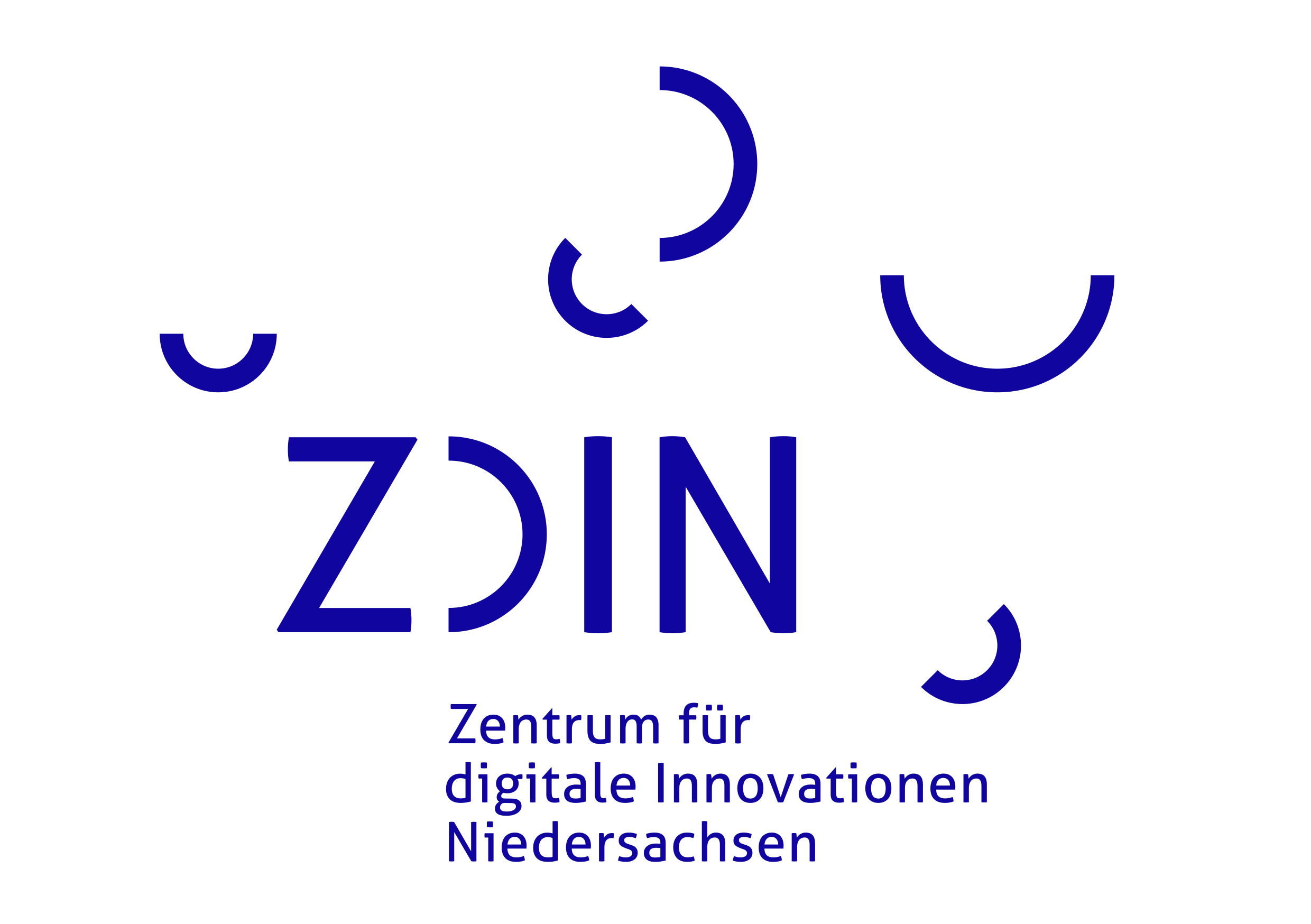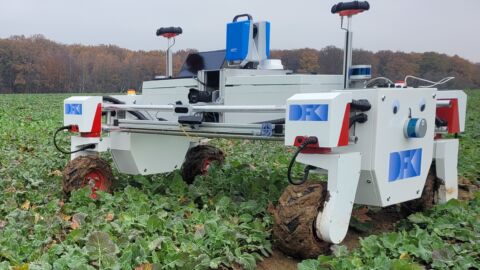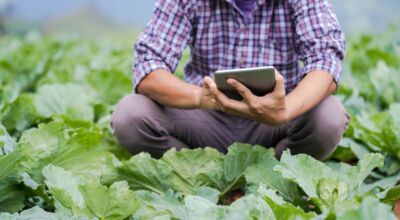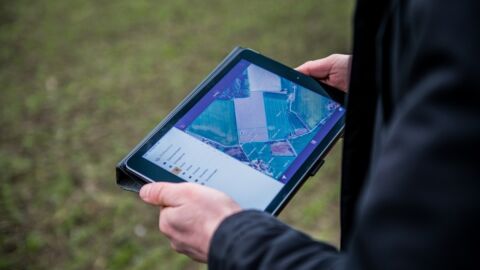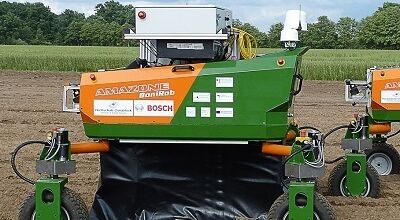ZDIN-Zahlen im Detail
Das umfangreiche ZDIN-Netzwerk aus Wissenschaft und Wirtschaft spannt sich über ganz Niedersachsen. Gemeinsam verzeichnen die Zukunftslabore und die Koordinierungsstelle beeindruckende Projekterfolge, die auf dieser Seite im Detail vorgestellt werden.
Wissenschaftliche Veröffentlichungen
The poultry industry is an important and still growing sector in many parts of the world. For ethical reasons and due to increased consumer awareness for animal welfare in production animals, it is of ...
The poultry industry is an important and still growing sector in many parts of the world. For ethical reasons and due to increased consumer awareness for animal welfare in production animals, it is of importance to establish a reliable and objective test system for monitoring and improving health and welfare. During the rearing process, broiler chickens are exposed to numerous potential stressors and management interventions (e.g. weighing of individual animals, pre-slaughter fasting and capture processes), but assessing the level of stress perceived by the animals entirely through behavioral observations can be challenging. Monitoring stress-related physiological markers, such as glucocorticoids, can be an accurate and presumably more objective addition. To avoid additional stressors induced by blood collection, a non-invasive approach using urofecal samples is advisable. However, a thorough validation is needed to establish a suitable test system for measuring stress hormone levels, including potential effects of the time of day of collection or the time that has elapsed since defecation.
Therefore, the aim of this study was to test the stability of urofecal glucocorticoid metabolites (ufGCM) post defecation, to determine time of day effects on ufGCM levels, and to investigate the effect of standard management procedures on ufGCM concentrations in broiler chickens.
Our results revealed a time window of 4 hours in which fecal samples from broilers can be collected without major alterations to the ufGCM concentrations. In this regard, a ‘fecal box’ proved useful for collecting uncontaminated fresh samples. The time of day of sample collection did not influence ufGCM concentrations significantly. Moreover, the used assay proved to be sensitive enough to detect even small and short-lasting activations of the HPA axis induced by handling, confinement, and fasting. Thus, the system used can be a powerful and easy to apply tool in a chicken production setup for assessing stress as a marker of welfare in commercially housed broiler chickens, which in the long-term can also improve production, particularly with regard to process quality.
Autor*innen
- Tanja Wolf
- Kathrin Toppel (Hochschule Osnabrück)
- Prof. Dr. Robby Andersson (Hochschule Osnabrück, Lehrstuhl Tierhaltung und Produkte)
- Prof. Dr. Chadi Touma (Universität Osnabrück)
Veröffentlichung
- Im Rahmen des Buches/Journals bzw. Konferenz: Poultry Science
- Datum: 01.08.2024 - 01.08.2024
- Link zur Veröffentlichung
According to the National Emission Ceilings (NEC) Directive ammonia (NH3) emissions in Germany must be reduced by 29% by 2030 compared to 2005. In order to comply with this limit value, the revised Ge ...
According to the National Emission Ceilings (NEC) Directive ammonia (NH3) emissions in Germany must be reduced by 29% by 2030 compared to 2005. In order to comply with this limit value, the revised German General Administrative Regulation to the Federal Immission Control Act (Technical instructions for air pollution control; TA-Luft) demands a 70% reduction in ammonia emissions for forced-ventilation poultry houses with a capacity of 40,000 animal places (AP) or more. Poultry houses with a capacity of 30,000 to 40,000 AP must reduce their ammonia emissions by 40%. Technical solutions are available but due to high costs and the poor carbon footprint of the technical solutions, other options are needed. As ammonia emissions emerge from the litter, affecting the animal welfare and health, the bedding material plays a key role in reducing ammonia emissions from the litter. Therefore, a new straw pellet including sodiumbisulfate (SBS) was tested on 2 commercial broiler farms during 3 cycles from January to August 2023 with a total of 234,900 Ross 308 broilers. Both farms had two identical poultry houses. The animals were kept for 42 days. Litter management followed standard recommendations with removing the bedding and cleaning the barn between each cycle. The international VERA test protocol for animal husbandry and management systems was used as the basis for the measurement planning (VERA 2018). Following a case and control method, one barn on each farm was littered with 1.2 kg/m² straw pellets (control) and the other barn was littered with 1.5 kg/m² straw pellets including about 20 % SBS. Case and control barns alternated between each run. Ammonia emissions were determined by FTIR analysis and by the volume flow rate of the poultry houses. Average mortality rate was 2 % over each production cycle. The average feed conversion ratio was 1.48 kg/kg in both, case and control. The use of straw pellets with SBS reduced ammonia emissions by 58.2 % compared to conventional straw pellets. The recovery rates for nitrogen of 106.4 % support these results. In relation to the TA-Luft the ammonia reduction target was achieved with 85 %. In order to complete the VERA test protocol, the tests are ongoing with an expected completion in March 2024.
Autor*innen
- Kathrin Toppel (Hochschule Osnabrück)
- Dr. Benedikt Thesing
- Lars Broer
- Prof. Dr. Robby Andersson (Hochschule Osnabrück, Lehrstuhl Tierhaltung und Produkte)
Veröffentlichung
- Im Rahmen des Buches/Journals bzw. Konferenz: 16th European Poultry Conference, 24th to 28th June2024, Valencia, Spain
- Datum: 24.06.2024 - 28.06.2024
Insufficient light conditions are discussed in reference to the occurrence of behavioral disorders, particularly feather pecking in turkeys. In order to ban the beak trimming in turkey husbandry, the ...
Insufficient light conditions are discussed in reference to the occurrence of behavioral disorders, particularly feather pecking in turkeys. In order to ban the beak trimming in turkey husbandry, the light conditions for turkeys need to be improved. In a first step, the current state of lighting conditions in representative turkey barns in north-east Germany were determined. This included e.g. recording installed light sources, including light spectrum, light intensity, and frequency. Additionally, the possibilities for influencing the lighting conditions in the barns were investigated, e.g. dimming of lamps and daylight exposure. Light measurements were conducted in 17 barns, including both naturally ventilated and mechanically ventilated barns with 2 different spectroradiometers (BTS2048-VL and BTS256-EF, Gigahertz Optic). About 75 different measuring points were recorded for each barn, about 60cm above the ground each measurement included mean of 10 measured values, integration time was 100ms. In the examined barns, fluorescent lamps (10x) and LEDs (7x) were installed and three of each were dimmable. In barns with LED lighting, emissions occurred between 400-780nm at each wavelength, so the artificial light spectrum of the LEDs did not contain a UV-A component. With fluorescent lamps, visible light is generated, inter alia, by the conversion of UV light in a fluorescent layer of the lamp, so a small amount of UV radiation (around 360nm) was measurable in the light spectrum. However, fluorescent lamps cannot achieve a daylight-like spectrum, as they emit a narrowband light spectrum characterized by peaks in three color ranges, and thus do not fulfill the light requirements of turkeys. When green blinds were used, the transmission of green wavelengths was enhanced, leading to a spectral shift and, consequently, a potential alteration in color perception by the turkeys. The measured fluorescent lamps may have been perceived as flickering by turkeys because the measured frequency was 100 Hz, thus below the flicker fusion frequency (FFF) of poultry. Light intensities varied significantly at the same dimming setting, making it challenging to make recommendations for light reductions based on dimming settings. For turkeys, the low frequencies (100 Hz) as well as the limited spectrum in artificial light and partially monochromatic light caused by green blinds, which supports false color vision, can trigger stress and be risk factors for behavioral disorders.
Behavioural disorder, turkey, lighting, flicker fusion frequency, UV-light
Autor*innen
- Kathrin Toppel (Hochschule Osnabrück)
- Anna Louisa Reimers (Hochschule Osnabrück, Fakultät Agrarwissenschaften und Landschaftsarchitektur)
- Prof. Dr. Robby Andersson (Hochschule Osnabrück, Lehrstuhl Tierhaltung und Produkte)
Veröffentlichung
- Im Rahmen des Buches/Journals bzw. Konferenz: 16th European Poultry Conference
- Datum: 24.06.2024 - 28.06.2024
In recent years, agriculture has become a major field of application and transfer for AI. The paper gives an overview of the topic, focusing agricultural processes and technology in Central-European s ...
In recent years, agriculture has become a major field of application and transfer for AI. The paper gives an overview of the topic, focusing agricultural processes and technology in Central-European style arable farming. AI could also be part of the transformation process of agriculture that is emerging world-wide in response to the UN global sustainable development goals (SDGs). In that sense, our overview includes pointers to some research towards AI in future agricultural systems.
Autor*innen
- M. Sc. Benjamin Kisliuk (Deutsches Forschungszentrum für Künstliche Intelligenz (DFKI) Niedersachsen)
- Prof. Dr. Joachim Hertzberg (Universität Osnabrück, Wissensbasierte Systeme, Institut für Informatik)
Veröffentlichung
- Im Rahmen des Buches/Journals bzw. Konferenz: KI - Künstliche Intelligenz
- Datum: 17.04.2024 - 17.04.2024
- Link zur Veröffentlichung
The poultry industry is an important and still growing sector in many parts of the world. For ethical reasons and due to increased consumer awareness for animal welfare in production animals, it is im ...
The poultry industry is an important and still growing sector in many parts of the world. For ethical reasons and due to increased consumer awareness for animal welfare in production animals, it is important to establish a reliable and objective test system for monitoring and improving health and welfare. During the rearing process, broiler chickens are exposed to numerous potential stressors, such as management interventions (e.g. weighing, fasting and capture processes), but assessing the animals stress levels entirely through behavioural observations is challenging. Monitoring stress-related physiological markers, such as glucocorticoids, can be an accurate and presumably more objective alternative. To avoid the additional stressor of blood sampling, a non-invasive approach is advisable, e.g. by measuring glucocorticoid metabolites from faecal samples. However, a thorough validation is needed to establish a suitable test system for a reliable measurement, including potential effects of the time of day of sample collection and the time that has elapsed since defecation.
The aim of this study was to investigate the effect of standard management procedures on the concentration of urofaecal glucocorticoid metabolites (ufGCM) in broiler chicken. Additionally we determined the diurnal variation of ufGCM levels and tested the stability of ufGCM post-defecation.
The used cortisone assay proved to be sensitive enough to detect even small and short-lasting activations of the HPA axis induced by management procedures. A ‘faecal box’ was found to be useful for collecting uncontaminated fresh samples within a time window of 4 hours in which urofaecal samples should be collected in order to avoid alterations of the measured ufGCM concentrations. Thus, the test system used is a powerful and valid tool to apply in a chicken production setup for monitoring the welfare of commercially housed broiler chickens, which in the long-term can also improve product quality.
Autor*innen
- Tanja Wolf
- Kathrin Toppel (Hochschule Osnabrück)
- Prof. Dr. Robby Andersson (Hochschule Osnabrück, Lehrstuhl Tierhaltung und Produkte)
- Prof. Dr. Chadi Touma (Universität Osnabrück)
Veröffentlichung
- Im Rahmen des Buches/Journals bzw. Konferenz: Tagung der Ethologischen Gesellschaft
- Datum: 21.02.2024 - 23.02.2024
Wissenschaftliche Vorträge
Referent*innen
- Kathrin Toppel (Hochschule Osnabrück)
Vortrag
- Im Rahmen der Veranstaltung: Vortrag im Rahmen der EuroTier 2024, Expert Stage Geflügel, 13.11.2024.
- Datum: 13.11.2024
Referent*innen
- M. Sc. Johanna Rolfes (Julius Kühn-Institut, Institut für Anwendungstechnik im Pflanzenschutz)
- Prof. Dr. Jens Karl Wegener (Julius Kühn-Institut, Institut für Anwendungstechnik im Pflanzenschutz)
Vortrag
- Im Rahmen der Veranstaltung: Young Scientist Meeting
- Datum: 13.11.2024
Referent*innen
- Eva-Marie Dillschneider (Julius Kühn-Institut, Institut für Anwendungstechnik im Pflanzenschutz)
Vortrag
- Im Rahmen der Veranstaltung: Young Scientists Meeting
- Datum: 13.11.2024
Referent*innen
- M. Sc. Andrii Besieda (Thünen-Institut, Institut für Agrartechnologie)
- Dipl.-Inform. Martin Kraft (Thünen-Institut, Institut für Agrartechnologie)
Vortrag
- Im Rahmen der Veranstaltung: KTBL Construction, Engineering and Environment in Livestock Farming: Session Qualitätssicherung, Dokumentation und Rückverfolgbarkeit - 10-12.09.24 in Freising
- Datum: 12.09.2024
Referent*innen
- Kathrin Toppel (Hochschule Osnabrück)
- Dr. Benedikt Thesing
- Lars Broer
- Prof. Dr. Robby Andersson (Hochschule Osnabrück, Lehrstuhl Tierhaltung und Produkte)
Vortrag
- Im Rahmen der Veranstaltung: 16th European Poultry Conference, 24th to 28th June2024, Valencia, Spain
- Datum: 26.06.2024
Außerwissenschaftliche Beiträge
Referent*innen
- Prof. Dr. Silke Hüttel
Beitrag
- Anlass: Staffel 06 Episode 08: Digitalisierung in der Landwirtschaft - Was beeinflusst die Akzeptanz ? https://open.spotify.com/episode/6CHKWXmdkc11EswEQMOoLS?si=oHlmNVJiSw-EXaslAPIA1w
- Datum: 19.11.2024 - 19.11.2024
Referent*innen
- Prof. Dr. Joachim Hertzberg (Universität Osnabrück, Wissensbasierte Systeme, Institut für Informatik)
- Stefanie Schläger
Beitrag
- Anlass: Das Netzwerk Ackerbau Niedersachsen e.V. (NAN) stellt auf seiner Website jeden Monat ein Forschungsprojekt mit niedersächsischer Beteiligung rund um den Ackerbau vor. Im September 2024 wurde dafür das Zukunftslabor Agrar ausgewählt. Der Sprecher des Zukunftslabors Agrar, Prof. Dr. Joachim Hertzberg, hat hierfür ein Interview gegeben.
- Datum: 02.09.2024 - 02.09.2024
Referent*innen
- M. Sc. Benjamin Kisliuk (Deutsches Forschungszentrum für Künstliche Intelligenz (DFKI) Niedersachsen)
Beitrag
- Anlass: Beitrag zur Sonderausstellung "Künstliche Intelligenz. Die letzte Erfindung der Menschheit?" des Museums Industriekultur Osnabrück. Ausgestellt ist ein Modell des Demonstrators Valdemar mit einer ausgedruckten Bodenkarte.
- Datum: 03.05.2024 - 17.11.2024
Referent*innen
- M. Sc. Johanna Rolfes (Julius Kühn-Institut, Institut für Anwendungstechnik im Pflanzenschutz)
Beitrag
- Anlass: Vortrag beim PraxisForum "Intelligenter Pflanzenschutz in Agrar und Forst"
- Datum: 11.03.2024 - 11.11.2024
Referent*innen
- Dr. Arne Ortland (Universität Vechta, Fakultät I, Wirtschaft und Ethik)
- Dr. Olaf Katenkamp (Universität Vechta, Fakultät I, Wirtschaft und Ethik)
Beitrag
- Anlass: Vernetzte Daten – landwirtschaftliche Datenräume in der Praxis
- Datum: 21.02.2024 - 21.02.2024
Messebeiträge
Das Zukunftslabor Agrar war mit einem Stand auf dem DLG-Spotlight „KI im Geflügelbetrieb“ auf der Messe EuroTier 2024 in Hannover vertreten. Vom 12. bis 15. November diskutierten die Wissenschaftler*innen mit nationalen und internationalen Tierhalter*innen und Vertreter*innen aus Wirtschaft, Politik und Wissenschaft die Projektergebnisse zur Digitalisierung in der Geflügelhaltung.
Beteiligte ZDIN-Einrichtungen
- Thünen-Institut
- Hochschule Osnabrück
- Universität Vechta
- Universität Osnabrück
Beitrag
- Art des Beitrags: Exponat
- Datum: 12.11.2024
- Ort: Hannover
Technologiedemonstratoren
Transfer-Workshops
Agrardatenräume bieten die notwendigen technischen Infrastrukturen, die die Integration vormals isolierter Datensysteme ermöglichen. Sie gewährleisten eine höhere Datensicherheit, eine bessere Datenverfügbarkeit unter Wahrung der Datenhoheit der landwirtschaftlichen Betriebe. Aber wie funktionieren Agrardatenräume nun konkret? Welche Voraussetzungen sind notwendig, um sie für eigene, betriebliche Prozesse zu nutzen und welche Vorteile entstehen daraus? Welche ungenutzten Potentiale können noch erschlossen werden?
Inhalte der Veranstaltung
- Impulsvorträge regionaler Experten und Anbieter von Agrardatenräumen
- Interaktive Diskussion über Potentiale von Datenräumen in der betrieblichen Praxis
- Kenntnisse über Agrardatenräume und ihre Anwendungsmöglichkeiten erhalten
Workshop
- Datum: 21.02.2024
- Ort: Emstek
Fort- und Weiterbildungen
Studienabschlussarbeiten
- Prof. Dr. Robby Andersson (Hochschule Osnabrück, Lehrstuhl Tierhaltung und Produkte)
- Art: Bachelor
- Themencluster: Prozessoptimierung
- Datum: 20.12.2024 - 11.04.2025
- Kathrin Toppel (Hochschule Osnabrück)
- Prof. Dr. Robby Andersson (Hochschule Osnabrück, Lehrstuhl Tierhaltung und Produkte)
- Art: Bachelor
- Themencluster: Prozessoptimierung
- Datum: 20.12.2024 - 14.03.2025
- Prof. Dr. Robby Andersson (Hochschule Osnabrück, Lehrstuhl Tierhaltung und Produkte)
- Kathrin Toppel (Hochschule Osnabrück)
- Art: Bachelor
- Themencluster: Prozessoptimierung
- Datum: 20.11.2024 - 10.02.2025
- Prof. Dr. Silke Hüttel
- Art: Bachelor
- Themencluster: Künstliche Intelligenz
- Datum: 14.08.2024
- Kathrin Toppel (Hochschule Osnabrück)
- Prof. Dr. Robby Andersson (Hochschule Osnabrück, Lehrstuhl Tierhaltung und Produkte)
- Art: Bachelor
- Themencluster: Datenmanagement und -analyse
- Datum: 15.06.2024 - 15.09.2024

